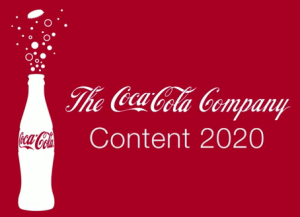I hadn’t thought that much about the definition of “content marketing” until I visited the Junta42 site for another reason, and realized that I wasn’t sure exactly how they were using the term. While scouting around for clues, I found an absolute gem buried in one of the many (many) layers and offshoots of the site.
Junta42 is a content-marketing matchmaker (projects-to-vendors), and their site is super-rich in content about content. But there is such a thing as too much abundance! Luckily, though, I did discover the Content Marketing Playbook and recommend it very highly. Subtitled “42 Ways to Connect with Customers,” this nifty ebook has a page for every imaginable kind of content, from white papers to webinars. And! Each page has a brief case study that links right to a relevant example of the content type. So if you’re not completely clear on what an “Online Media Site” might be (Item 31), you can click right over to an example at Proctor & Gamble’s HomeMadeSimple.com.
For every content type there’s a handy cheat sheet, explaining what it is, who/what it’s good for, who/what it’s not good for–and ending with three quick tips. A cruise through this book provides a great refresher on content forms that are already familiar (blogging, newsletters, podcasts, etc.) and should also offer every reader at least a few new ideas. Get up to speed on magalogs, wikis, widgets, and more.
Suggestions: (1) Open/download the PDF version. You can page through the book via the website, but there’s a lot of visual distraction. (2) While visiting Junta42, bookmark their guide to the “Top 42” blogs about content marketing. (The list is also an example of Playbook Item 11, the “Industry Ranking System.”)
Speaking of cheat sheets—there is an exceptionally concise summary of employer branding on the website of Singapore-based Human Resources magazine. It’s smart, short, simple, and clear. Here’s a highlight:
Generally, companies can focus on four types of employer branding messages:
Focus on offers: “At our company, you get more than what you get elsewhere. (E.g. benefits, culture, and career opportunities)”
Focus on personality: “You can find people who are similar to you in our company.”
Focus on values: “Values are important to us. If you share the same values, you can live according to what’s important to you here.”
Focus on tasks: “At our company, you will get the chance to do what excites you and you will love it here.”
This article provides a nice refresher for those already engaged with employer branding, and a useful starting point for those new to the topic.
All in all–two free reads that offer a lot of value.
(Thanks to Arnero for the . . . illustration. Wondering what it is? Me too. By title, a “Combustor with guide vanes.” No idea what that means, but it’s really cool to look at!)
Cynthia Giles has followed a serpentine career path from academia to publishing to marketing and design to information technology and corporate communications. There’s plenty of detail about this journey at www.cynthiagiles.com, but briefly--the common theme has been ideas, and how to present them effectively. Along the way, she became an accidental expert on data warehousing and business intelligence, and for the past ten years she has combined corporate contracting with an independent consulting practice that focuses on marketing strategy for smaller businesses and non-profits.
Having spent quite a bit of time looking for work, and anywhere from two weeks to two years inside a wide variety of American companies—she has given much thought to what works (and what doesn’t) when it comes to creating a great employment fit.



